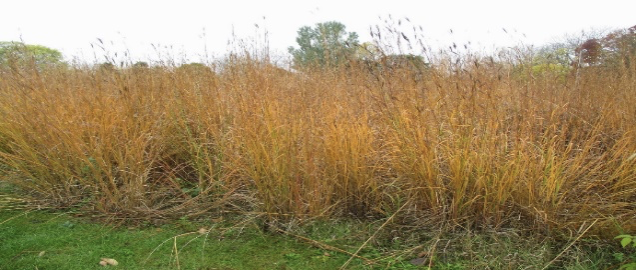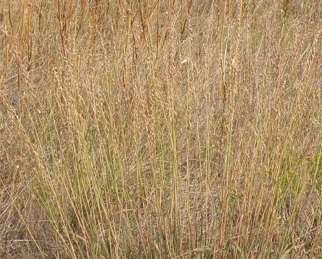Ornamental Grasses – Go Native
- Jeanne McRight

- Mar 15, 2022
- 3 min read
by Diana Westland, Mississauga Master Gardener and BB member/volunteer
I have been interested to see the increase in the amount and variety of ornamental grasses for sale in the local nurseries over the past few years. See Garden Center Magazine - March 2021 - No flower, no problem where this trend is discussed. The reason for the public interest in grasses is due to the striking visual interest these grasses have throughout the year. Grasses are also drought and pest resistant which would be another attraction for the busy homeowner. Sadly, non-native grasses frequently outsell native grasses at many nurseries, a lost opportunity to restore natural ecosystems.
So let's explore some native grasses that can be used as substitutes to the non-native ornamental grasses being sold. These native grasses also have visual appeal, are drought tolerant, and most importantly, can be used to augment habitat for our native insects and wildlife. This includes providing winter cover under snow, nesting material, shelter from predators, concentrated insects and seeds for food. Tall grasses can also provide strong vertical supports when planted among tall top-heavy pollinator flowers such as Blazing-Stars, Milkweeds, Coneflowers, Coreopsis, Sunflowers, Monardas, and Asters.
Big Bluestem (Andropogon gerardii), Little Bluestem (Schizachyrium scoparium), Switchgrass (Panicum virgatum), and Indian Grass (Sorghastrum nutans) are native to the Mississauga area and Carolinian zone. All but the Little Bluestem can grow very tall. These taller grasses are suited to a larger property that has space to fill in a back border, or as a single accent plant in a smaller garden. Additional information on tall grass remediation projects can be found in the Tallgrass Ontario publications;
1. Big Bluestem (Andropogon gerardii) - Grows 6-8 ft high and 3 ft wide. Prefers moist to average soil but can tolerate drought. Big Bluestem is a warm season grass that starts leaf growth in late spring, with the seed head in late summer to fall.
Left: Late summer Big Bluestem, Picture courtesy of Arbor Valley Nursery
Right: Fall colours, Picture courtesy of Mark Dwyer 2015
2. Indian Grass (Sorghastrum nutans) - Up to 6.5 ft tall and 3 ft wide. Indian Grass is a warm season grass, blooming late summer and fall. Prefers full sun, dry-medium well drained soils and is drought tolerant.
Left: Summer Indian Grass, Picture courtesy Prairienursery.com
Right: Fall colour, Picture courtesy of Ernst Seeds
3. Switchgrass (Panicum virgatum) - Up to 5 ft tall. This is another warm season grass, initiating growth in spring with pinkish inflorescence and seed head developing in late summer and fall. Prefers full sun and is drought tolerant.
Summer and fall colours Switchgrass, pictures courtesy of Prairienursery.com
4. Little Bluestem (Schizachyrium scoparium) - Up to 2-3 ft tall and 2.5 ft wide at maturity. This is a shorter warm bunch grass. It needs full sun, well-drained soil and is drought tolerant.

Summer and fall colours, pictures courtesy of kwyg.stonepocket.com
5. Sideoats Grama (Bouteloua curtipendula), and Prairie Dropseed (Sporobolus heterolepis (Rare)) are native further west but are considered ecologically valuable. These shorter grasses are under a meter high, and salt-tolerant for borders near driveways, roads and sidewalks in the city.
Summer, Picture courtesy of Sany and Andy Wasowski
6. Prairie Dropseed (Sporobolus heterolepis) - 2 ft tall and 18-24 inches wide. The grass is both tolerant to drought and periodic inundation in a sunny area with well-drained soil. Flower heads are slightly aromatic.
Prairie Dropseed flowering right and seed head left, Photo courtesy of Prairie dropseed, Sporobolus heterolepis – Wisconsin Horticulture
Grasslands are one of the most endangered ecosystems in Canada, with the potential loss of a great many species that rely on them for food and habitat. Planting native grasses on private properties will help to produce and disperse the additional seeds allowing a spread to nearby greenspaces. These grasses will rarely need maintenance other than to cut back to ground in the late spring, to encourage new growth. The seeds will be eaten by some migratory birds, so a fall to early spring cut down is not recommended to ensure this food is available when food is scarce in early spring. Unlike typical lawn grasses, use of high nitrogen fertilizer is not necessary and discouraged as rapid growth will weaken the stems.
Try to find a space for a native grass on your property this year. The birds will thank you.
References:
Cathy Quinlan, Tallgrass Ontario 2005. A landowner’s Guide to Tallgrass Prairie and Savanna, Management in Ontario, www.tallgrassontario.org

























Comments